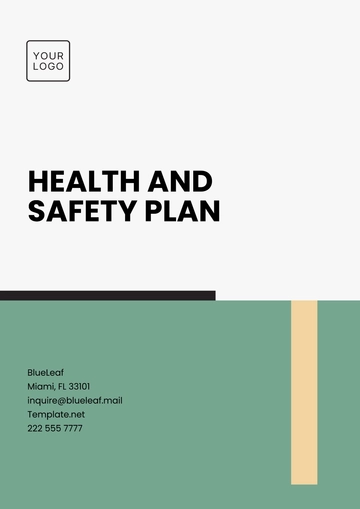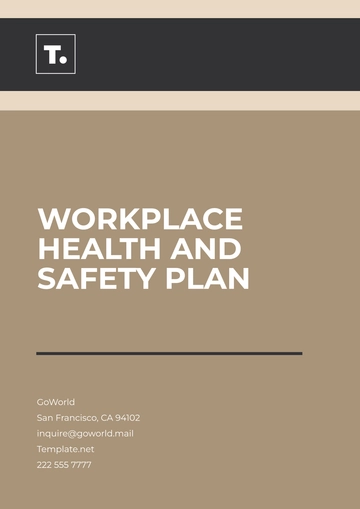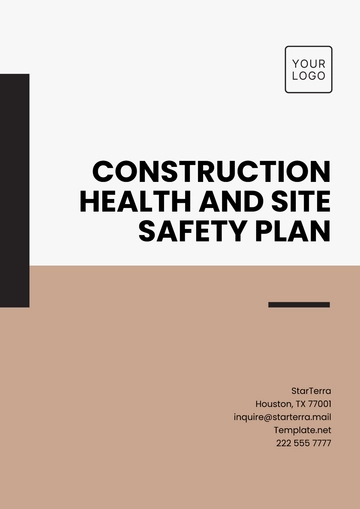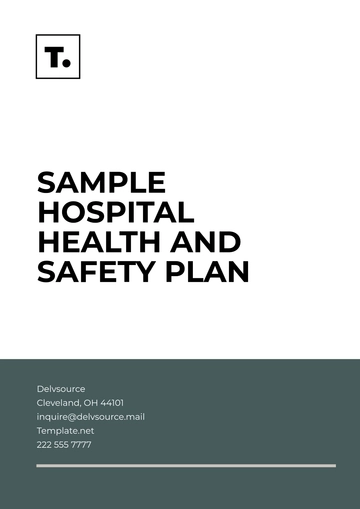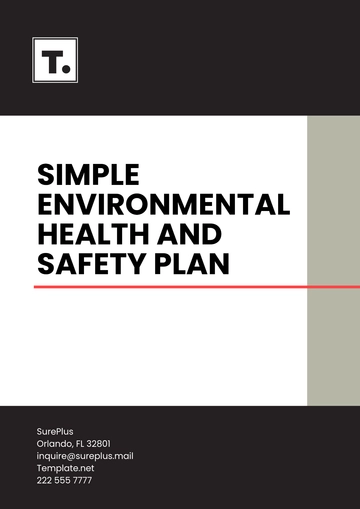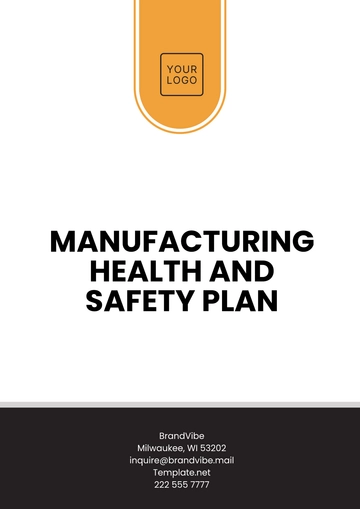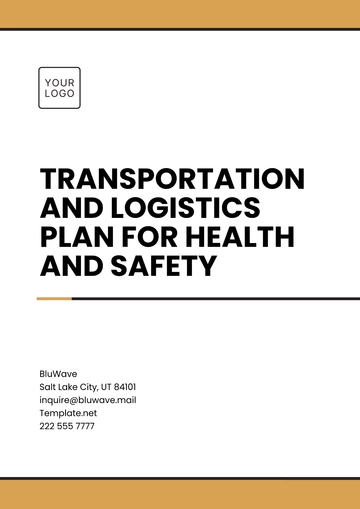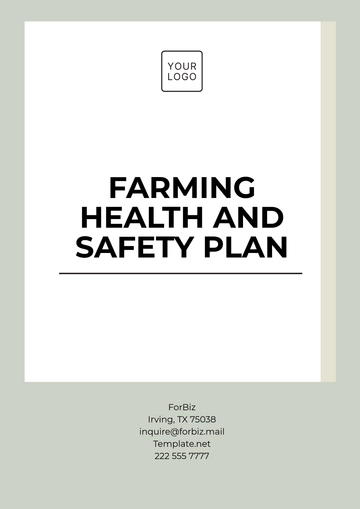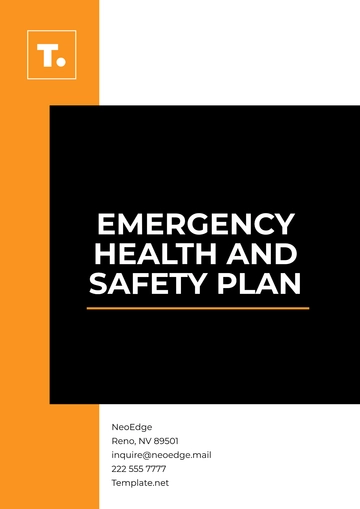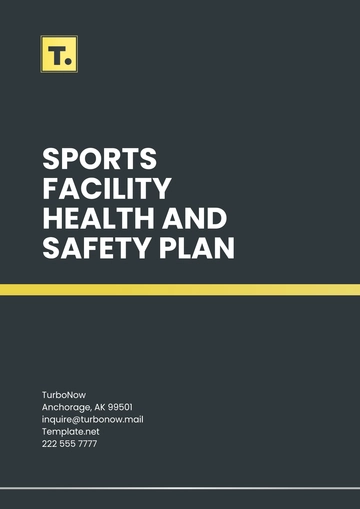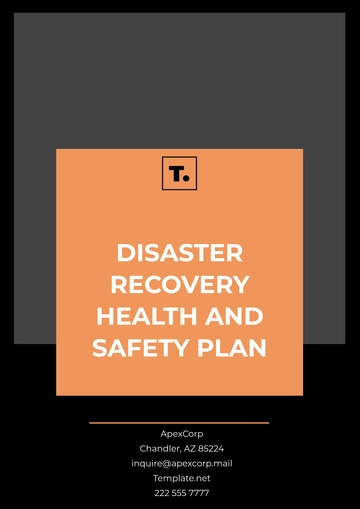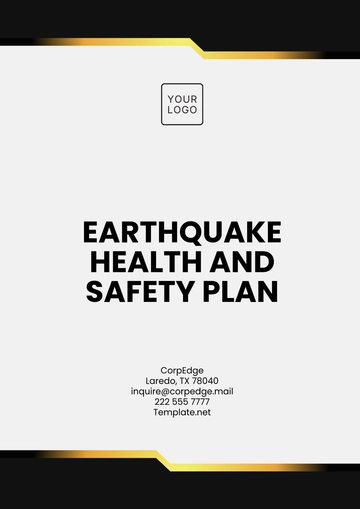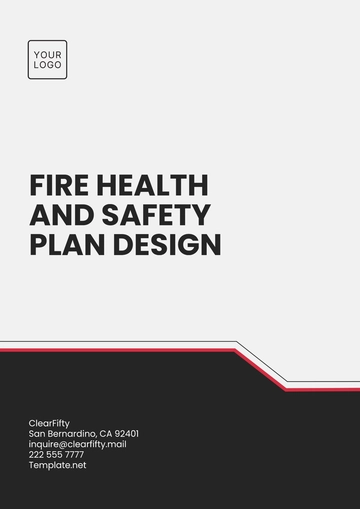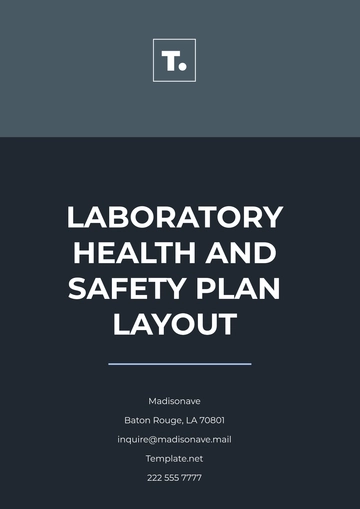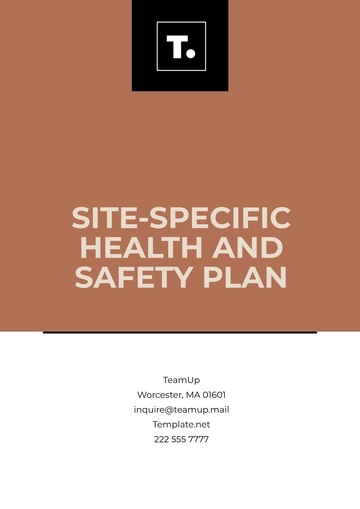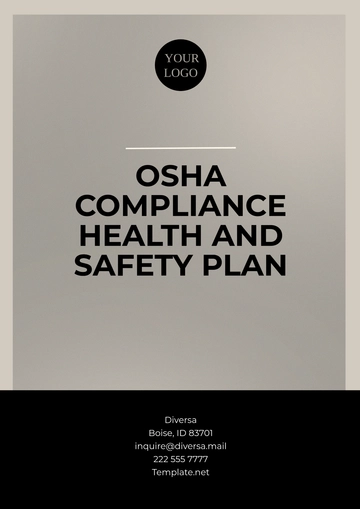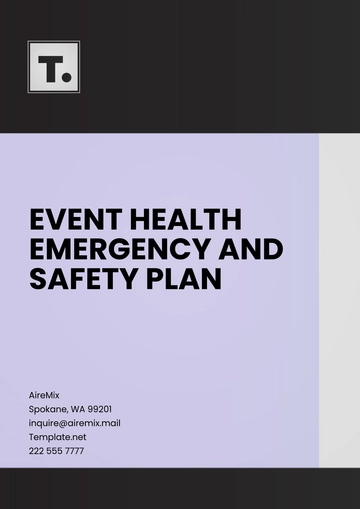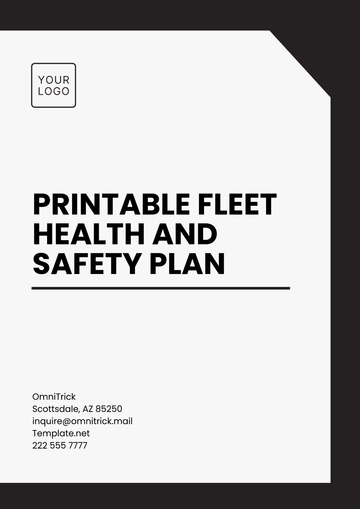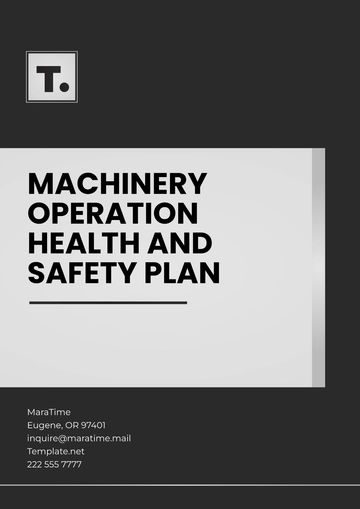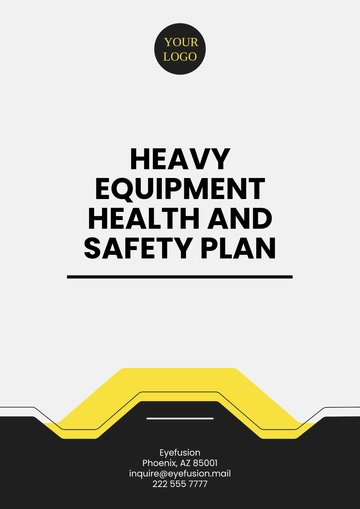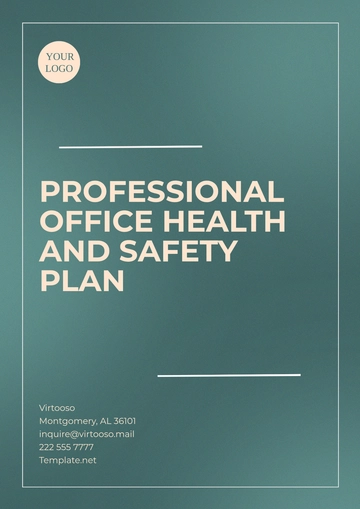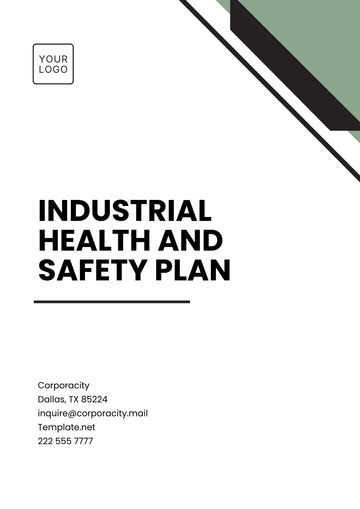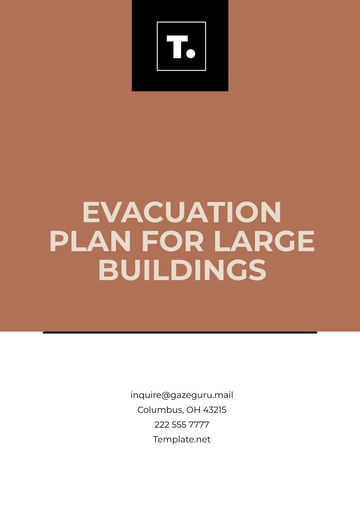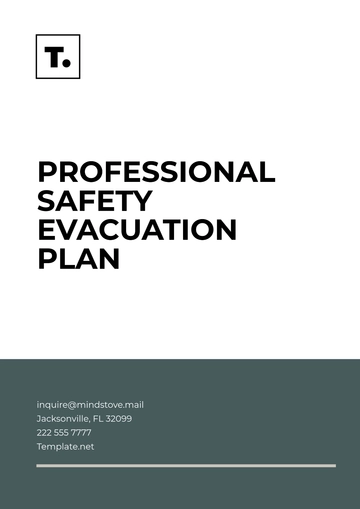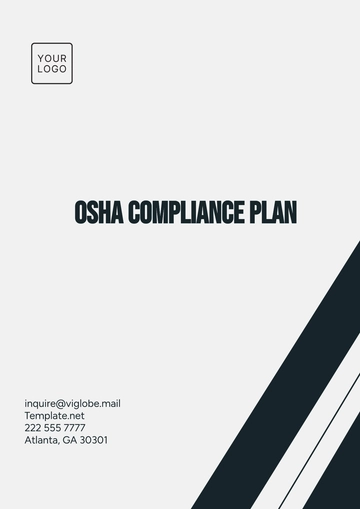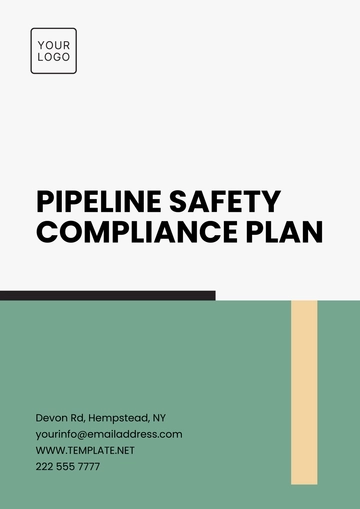Free Safety Management Plan
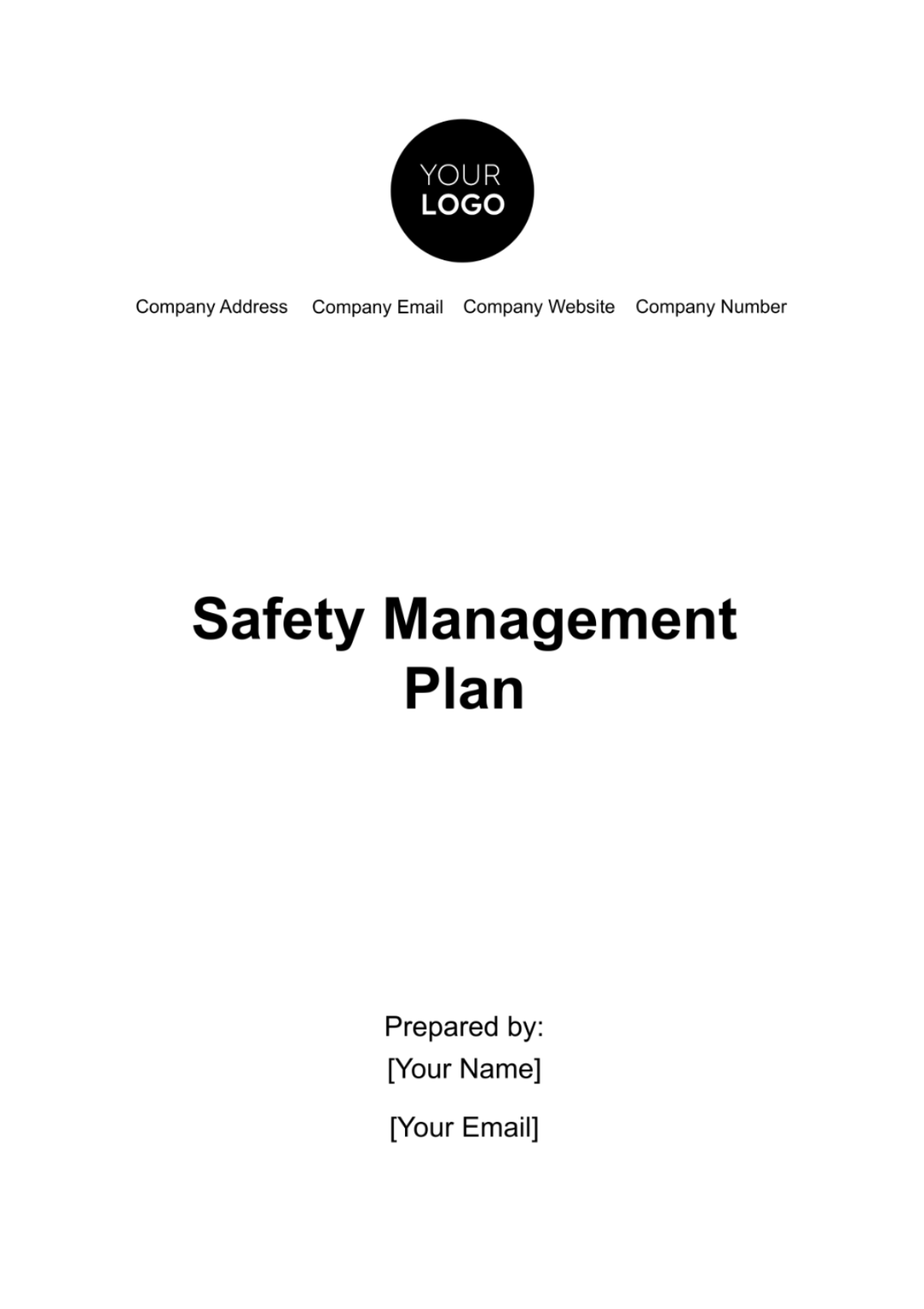
I. Executive Summary
Welcome to the [Your Company Name] Safety Management Plan (SMP). As a premier [industry/sector] organization, we prioritize the safety and well-being of our employees, visitors, and stakeholders. This executive summary provides a snapshot of our commitment to safety and outlines key objectives and initiatives to ensure a secure working environment.
A. Organizational Overview
[Your Company Name] has been a trailblazer in [industry/sector] since [year of establishment]. Our unwavering commitment to innovation, excellence, and safety has positioned us as a leader in [specific achievements or contributions to the industry]. With [number of] employees, we operate with the vision of [brief description of the organizational vision].
B. Commitment to Safety
Our commitment to safety is fundamental to our organizational values. Beyond compliance with regulations, we strive to foster a culture of safety excellence. This commitment is embedded in our daily operations, leadership practices, and employee engagement initiatives.
C. Key Safety Objectives
Our primary safety objectives include achieving zero workplace accidents, ensuring regulatory compliance, and providing continuous safety training for all employees. These objectives align with our broader commitment to the well-being of our workforce and the communities we serve.
D. Safety Initiatives
To achieve our safety objectives, we implement proactive safety measures, invest in state-of-the-art safety technologies, and cultivate a culture where safety is everyone's responsibility. Our Safety Management Team continually evaluates and refines our safety initiatives to address emerging risks and challenges.
II. Introduction
A. Background
[Your Company Name] stands as a cornerstone in the [industry/sector] landscape, contributing [specific achievements or notable projects] over the years. Our operations extend across [locations] with a focus on [core areas of operation].
B. Purpose and Scope
The Safety Management Plan (SMP) serves as a comprehensive framework to systematically manage safety across our diverse operations. Its purpose is to establish a robust system for identifying, mitigating, and preventing workplace hazards. The scope of the SMP encompasses all employees, contractors, visitors, and any individuals affected by our activities.
Our commitment extends beyond regulatory compliance, aiming to create a workplace where safety is ingrained in every aspect of our operations. The SMP is not a static document; it evolves with the changing landscape of our industry, regulatory environment, and organizational structure.
C. Legal and Regulatory Considerations
In alignment with our commitment to safety, [Your Company Name] adheres to all relevant local, state, and federal safety regulations. This includes compliance with [list specific regulations and standards, such as OSHA, EPA, etc.]. Our legal and compliance team actively monitors changes in regulations to ensure timely adjustments to the SMP.
The SMP is designed not only to meet but exceed legal requirements, reflecting our dedication to setting the highest standard of safety in our industry. In instances of regulatory changes, the SMP is promptly reviewed and updated to reflect the latest legal requirements.
III. Safety Policy and Objectives
A. Safety Policy
At [Your Company Name], safety is our top priority. We are committed to providing a safe and healthy work environment by implementing effective safety measures and fostering a culture of continuous improvement.
B. Safety Objectives
Our safety objectives include:
Achieving zero workplace accidents and injuries.
Ensuring compliance with all applicable safety regulations.
Providing ongoing safety training for all employees.
C. Responsibilities
Top Management: [Names and roles] are responsible for overall safety leadership and support.
Safety Management Team: [Names and roles] oversee the implementation of safety measures.
Employees: All employees are responsible for following safety protocols and reporting hazards.
IV. Organizational Structure and Responsibilities
A. Safety Management Team
The Safety Management Team includes [Names and roles], who are responsible for coordinating and implementing safety initiatives across the organization.
B. Roles and Responsibilities
Safety Manager: [Name] is responsible for overall safety program management.
Safety Officers: [Names] are responsible for specific safety functions, including [list responsibilities].
C. Communication Channels
Open communication channels are established through regular safety meetings, email updates, and an anonymous reporting system for employees to raise safety concerns.
V. Risk Assessment and Hazard Identification
A. Methodologies for Hazard Identification
We employ regular workplace inspections, employee feedback, and incident reports to identify and assess potential hazards. Risk assessments are conducted using [specific methodologies, tools, or criteria].
B. Documentation of Identified Risks
All identified risks, their severity, and mitigation strategies are documented in the [Your Company Name] Risk Register. This register is regularly updated and made accessible to all employees.
C. Procedures for Regular Risk Assessments
Risk assessments are conducted annually and whenever there are significant changes in the workplace, processes, or equipment. The findings are used to update safety measures accordingly.
VI. Emergency Response and Preparedness
A. Emergency Response Plan
Our Emergency Response Plan outlines procedures for responding to fires, medical emergencies, natural disasters, and other potential crises. This plan includes evacuation routes, assembly points, and designated roles during emergencies.
B. Communication Protocols
Clear communication protocols are established to ensure rapid dissemination of emergency information. Emergency contact information is regularly updated and prominently displayed.
C. Training Programs
Employees receive regular training on emergency response procedures. Drills and simulations are conducted semi-annually to test the effectiveness of the Emergency Response Plan.
VII. Incident Reporting and Investigation
A. Reporting Procedures
Employees are encouraged to report all accidents, incidents, and near misses promptly. An online reporting system is available, and employees can also report incidents to their immediate supervisors.
B. Investigation Process
Incidents are thoroughly investigated by the Safety Officers. The investigation includes identifying root causes and implementing corrective actions to prevent similar incidents.
C. Corrective Actions
Corrective actions are documented and tracked to completion. Employees are informed of the outcomes, and lessons learned are shared during safety meetings.
VIII. Training and Education
A. Training Programs
Employees undergo comprehensive safety training during onboarding, with regular refresher courses provided throughout their employment. Training programs cover hazard recognition, proper equipment use, and emergency response procedures.
B. Training Requirements
All employees, including management, are required to complete [specified hours] of safety training annually. Training records are maintained and monitored for compliance.
C. Ongoing Education Initiatives
Monthly safety awareness campaigns and toolbox talks are conducted to reinforce key safety messages and promote a culture of safety vigilance.
IX. Communication and Consultation
A. Communication Channels
Regular communication channels, including safety newsletters, bulletin boards, and email updates, are established to disseminate safety information to all employees.
B. Employee Involvement
Employees are encouraged to actively participate in safety-related decisions. Feedback mechanisms, such as suggestion boxes and safety committees, are in place to gather input.
C. Safety Meetings and Consultations
Monthly safety meetings are conducted to discuss current safety issues, review incident reports, and address employee concerns. Management actively participates to demonstrate their commitment to safety.
X. Compliance with Regulations
A. Overview of Regulations
[Your Company Name] places a paramount emphasis on adherence to safety regulations and standards. Our commitment extends to understanding and complying with the full spectrum of regulations relevant to our industry. This includes but is not limited to [list specific regulations and standards, such as OSHA, EPA, etc.].
B. Assurance of Compliance
To ensure compliance, [Your Company Name] conducts regular internal audits and inspections. Our internal audit team, in collaboration with safety officers, systematically reviews our safety practices, protocols, and documentation. Corrective actions are promptly implemented to address any identified non-compliance issues.
Additionally, we maintain an open line of communication with regulatory bodies, participating in inspections and proactively seeking guidance to enhance our compliance efforts. Our commitment is not just meeting legal requirements, but exceeding them to create an exemplary standard of safety.
C. Monitoring and Updating
The Safety Management Team is responsible for monitoring changes in safety regulations. Regular reviews are conducted to assess the relevance and impact of any amendments or new regulations. Any necessary updates to the Safety Management Plan are promptly implemented to reflect these changes.
XI. Safety Performance Monitoring and Measurement
A. Key Performance Indicators (KPIs)
[Your Company Name] utilizes a set of Key Performance Indicators (KPIs) to gauge our safety performance. These include metrics such as the number of incidents, near misses, response times during emergencies, and the effectiveness of our safety training programs.
B. Metrics for Evaluation
In addition to KPIs, we conduct regular safety audits, inspections, and employee feedback sessions to evaluate the effectiveness of our safety initiatives. Findings from these assessments are meticulously documented and analyzed to identify areas for improvement.
C. Safety Audits and Inspections
Biannual safety audits and inspections are conducted by our internal audit team. These assessments involve a thorough review of our safety protocols, facilities, and practices. The results inform our continuous improvement efforts, ensuring that our safety measures align with the highest standards.
XII. Continuous Improvement
A. Review Processes
Continuous improvement is ingrained in our safety culture. Annually, the Safety Management Plan undergoes a comprehensive review. This process involves input from the Safety Management Team, employees, and relevant stakeholders. Findings from the review are used to update and enhance the plan, ensuring its ongoing effectiveness.
B. Learning from Incidents
Every incident, whether minor or significant, is viewed as an opportunity for learning and improvement. Lessons learned from incidents and near misses are documented, analyzed, and shared during safety meetings. This information forms the basis for refining our safety training programs and preventing recurrence.
C. Culture of Continuous Improvement
At [Your Company Name], we actively promote a culture of continuous improvement in safety. Recognition of safety achievements, employee suggestions, and the implementation of best practices are integral components of our commitment to evolving and enhancing our safety management practices.
- 100% Customizable, free editor
- Access 1 Million+ Templates, photo’s & graphics
- Download or share as a template
- Click and replace photos, graphics, text, backgrounds
- Resize, crop, AI write & more
- Access advanced editor
Enhance workplace safety with Template.net's Safety Management Plan Template. This editable and customizable template, powered by our Ai Editor Tool, equips you with a comprehensive framework to mitigate risks and ensure compliance. Effortlessly tailor safety protocols to your organization's needs and foster a secure work environment with ease.
You may also like
- Finance Plan
- Construction Plan
- Sales Plan
- Development Plan
- Career Plan
- Budget Plan
- HR Plan
- Education Plan
- Transition Plan
- Work Plan
- Training Plan
- Communication Plan
- Operation Plan
- Health And Safety Plan
- Strategy Plan
- Professional Development Plan
- Advertising Plan
- Risk Management Plan
- Restaurant Plan
- School Plan
- Nursing Home Patient Care Plan
- Nursing Care Plan
- Plan Event
- Startup Plan
- Social Media Plan
- Staffing Plan
- Annual Plan
- Content Plan
- Payment Plan
- Implementation Plan
- Hotel Plan
- Workout Plan
- Accounting Plan
- Campaign Plan
- Essay Plan
- 30 60 90 Day Plan
- Research Plan
- Recruitment Plan
- 90 Day Plan
- Quarterly Plan
- Emergency Plan
- 5 Year Plan
- Gym Plan
- Personal Plan
- IT and Software Plan
- Treatment Plan
- Real Estate Plan
- Law Firm Plan
- Healthcare Plan
- Improvement Plan
- Media Plan
- 5 Year Business Plan
- Learning Plan
- Marketing Campaign Plan
- Travel Agency Plan
- Cleaning Services Plan
- Interior Design Plan
- Performance Plan
- PR Plan
- Birth Plan
- Life Plan
- SEO Plan
- Disaster Recovery Plan
- Continuity Plan
- Launch Plan
- Legal Plan
- Behavior Plan
- Performance Improvement Plan
- Salon Plan
- Security Plan
- Security Management Plan
- Employee Development Plan
- Quality Plan
- Service Improvement Plan
- Growth Plan
- Incident Response Plan
- Basketball Plan
- Emergency Action Plan
- Product Launch Plan
- Spa Plan
- Employee Training Plan
- Data Analysis Plan
- Employee Action Plan
- Territory Plan
- Audit Plan
- Classroom Plan
- Activity Plan
- Parenting Plan
- Care Plan
- Project Execution Plan
- Exercise Plan
- Internship Plan
- Software Development Plan
- Continuous Improvement Plan
- Leave Plan
- 90 Day Sales Plan
- Advertising Agency Plan
- Employee Transition Plan
- Smart Action Plan
- Workplace Safety Plan
- Behavior Change Plan
- Contingency Plan
- Continuity of Operations Plan
- Health Plan
- Quality Control Plan
- Self Plan
- Sports Development Plan
- Change Management Plan
- Ecommerce Plan
- Personal Financial Plan
- Process Improvement Plan
- 30-60-90 Day Sales Plan
- Crisis Management Plan
- Engagement Plan
- Execution Plan
- Pandemic Plan
- Quality Assurance Plan
- Service Continuity Plan
- Agile Project Plan
- Fundraising Plan
- Job Transition Plan
- Asset Maintenance Plan
- Maintenance Plan
- Software Test Plan
- Staff Training and Development Plan
- 3 Year Plan
- Brand Activation Plan
- Release Plan
- Resource Plan
- Risk Mitigation Plan
- Teacher Plan
- 30 60 90 Day Plan for New Manager
- Food Safety Plan
- Food Truck Plan
- Hiring Plan
- Quality Management Plan
- Wellness Plan
- Behavior Intervention Plan
- Bonus Plan
- Investment Plan
- Maternity Leave Plan
- Pandemic Response Plan
- Succession Planning
- Coaching Plan
- Configuration Management Plan
- Remote Work Plan
- Self Care Plan
- Teaching Plan
- 100-Day Plan
- HACCP Plan
- Student Plan
- Sustainability Plan
- 30 60 90 Day Plan for Interview
- Access Plan
- Site Specific Safety Plan
